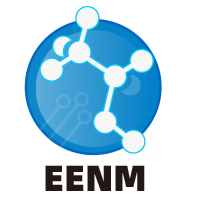
Speakers
Prof. Shahid Hussain H-index: 54 Jiangsu University, China |
Biography: Prof. Dr. Shahid Hussain by national Pakistan, is currently working as Professor (Full) at School of Materials Science and Engineering, Jiangsu University, China. He completed his PhD degree in Chongqing University, 2015, after started Post-Doctoral research fellowship 2015-2017. He joined Jiangsu University as Associate Professor in July 2017 and based on his outstanding achievements and experiences, he was promoted as Full Professor in July 2020, and was approved by the State and Govt of China. Recently, he has joined as Associate Professor at University of Sargodha, Pakistan. Research foundation and working conditions: At present, Dr. Shahid Hussain and the project team have executed a lot of work in the field of metal oxide, sulfides, MXene and metal-organic based gas sensors, supercapacitors and LiS Batteries. He has published high quality research articles, and has a wealth of experience, which laid a solid foundation for the project related research. Dr. Shahid Hussain has excellent working experience on gas sensors and has been working on sensor device fabrication since 2011. He has published more than 325+ SCI indexed journal research articles with h-Index is 56 in Google Scholar with 11000 citations (Till date Nov 2024) and 11 book Chapters and has impact factor ~ IF>2500. He is also working as an Editor for 17 SCI indexed journals (Elsevier, Springer, Frontiers, Hindawi, American Scientific Publishers and MDPI). Moreover, he has appeared as Keynote speaker in 22 international conferences and as Conference Chair in 3 international conferences. He also has an honor serving as a Coordinator for Materials Science Society of Pakistan (MSSP). He is also member for International Think Tank Institute of Peace and Development (INSPAD-UNO) since August 2020. Title: Trends in Triboelectric Nanogenerator for Self-Powered Gas Sensing Abstract: As industrialization accelerates, gas sensors evolve to become portable, wearable, and ecologically friendly. However, typical gas sensors require an external power supply, which significantly limits their use in a variety of sectors. Triboelectric nanogenerators, a novel and ecologically flexible power generating technology, may be combined with gas sensors to maximize the benefits of both technologies for efficient and environmentally friendly self-powered gas sensing. It also objectively analyzes technical challenges such as performance enhancement, theoretical refinement, and application expansion, and provides targeted strategies and future research directions to pave the way for continued progress and widespread applications in the field of self-powered gas sensors. |
 |
Prof. NOUR FATHI SHEHATA ATTIA National Institute of Standards, Egypt |
Biography: Prof. Dr. Nour F. Attia is Full professor at gas analysis and fire safety lab, chemistry division, National Institute of standards (NIS), Dr. Attia's research contributions in the field of nanochemistry, energy gasses (H2 & CH4) storage, gas separation and greenhouse gases capture, smart textile and water treatments. Prof. Attia published more than 105 international papers in high impact factor journals and presented in more than 50 in international conferences. Additionally, Dr. Nour published 4 book chapters, 6 international patents (2 USA and 4 Korean) and four Egyptian patents were recently filled. His H-index is 39. Also, he has been awarded several national and international prizes such as State Prize, National Institute of Standards Prize, Medal of Excellence from the first class from President of the Republic 2020 , Obada-Prize and Climate Change Alleviation Award 2022 from Mansoura University. He has been elected as a member of the Egyptian Young Academy of Sciences for 2021-2024. Additionally, he has selected among the highest distinguished top 2% worldwide scientists in the following connective years 2021,2022,2023 and 2024. He has elected as member of National committee of new and advanced materials 2022-2025. He is PI of several research projects funded from ASRT and STDF. Also, he is editor-in-chief of Journal of Climate Change Action and editorial board members for many international Journals. Interestingly, he organized and chaired various international conferences and workshops in the filed of hydrogen energy, greenhouse gases and nanotechnology. Additionally, Prof. Attia academically supervised more than 20 postgraduates’students and teaching in different Egyptian universities. Recently, he has been selected as member of Electricity and Energy Research Council 2025-2028, ASRT, Egypt. Title: Conductive Textile as New Smart Materials for Sensor and Electronic Applications Abstract: Textile materials are widely used in several applications and domestic industries owing to their distinctive properties, including flexibility, cost-effectiveness, and a variety of colors and textures. Nonetheless, these materials possess several disadvantages due to their organic composition, including high electrical insulation, heightened flammability risks, susceptibility to microbial proliferation, sensitivity to ultraviolet radiation, and superior mechanical qualities. Thus, smart treatments process has to implemented to incorporate high electrical conductivity, fire and antibacterial safety, in addition to reinforcement and UV protection properties. Therefore, they can be exploited in flexible wearable sensor for detection of toxic gases and determination of toxic ions applications. This is in addition to other electronic applications. Hence, this lecture will cover the smart treatment process for production of smart conductive textile for electronic applications. |
 |
Prof. Ahmad Zuhairi Abdullah Universiti Sains Malaysia, Malaysia |
Biography: Professor Dr Ahmad Zuhairi Abdullah is currently the Deputy Dean (Research, Postgraduate & Network) at School of Chemical Engineering, Universiti Sains Malaysia. He received his B. Tech (Hons) in 1995 from Universiti Sains Malaysia and subsequently MSc (2000) and PhD (2004) in the field of chemical process technology and chemical engineering, respectively. He has been a registered chemist with Malaysian Institute of Chemistry since 2005. His research works mostly encompass catalysis and chemical reactions involved in the production of renewable energy sources, downstream oleochemicals, waste treatment and green technology which are definitely relevant and strategic to Malaysian economy. Some of them involve collaboration with industries such as Felda, WD-Media, Pacific West Foods and SilTerra to solve their problems and to improve efficiency in order to remain competitive in the future. He is among the pioneering researchers in the world to focus on the use of ultrasound to accelerate heterogeneous catalytic processes. He is the recipient of several innovation and publication awards based on his research works. Many industry engineers and research scientists with higher qualification in these areas have been successfully trained. His research expertise is often sought after for the assessment of Environmental Impact Assessment (EIA) reports on proposed strategic commercial projects such as oil refinery, petrochemical complex, sanitary landfill, smelting plant, used acid lead battery, paper mill etc. Various industrial problems have been successfully solved through his consultancy projects. He has been involved in the propagation of science and technology through nearly 200 refereed publications in journals and book chapters mainly as the main author, and also involves as a technical committee member to nearly 80 international scientific conferences held across the globe. Many invitations on various roles have also been received to share his research experience with government officers, research scientists, junior researchers and school children. The objectives of the events vary from the critical research skills, understanding science, promotion of sustainability, community awareness, carrier development to the understanding of policy and regulatory aspects. Few travel grants have been received to share his research experience in Japan, Indonesia and Laos. Research collaborations with local and international counterparts have been successfully established for the advancement of science. He also acts as an examiner to many postgraduate theses locally and internationally as well as an article reviewer to more than 80 different leading international journals in his area of expertise. In addition, he is an evaluator to research proposals received from the university, local ministries as well as international scientific associations such as American Chemical Society and the Qatar National Research Foundation. He is one of the recipients of the Top Research Scientist Malaysia 2014 award. His h-index (Scopus) is currently stands at 34. Title: Bimetallic Ni-Co and Ni-Cu mesoporous catalytic materials for selective lignin depolymerization into simple phenolic substances with isopropanol as the H-donating solvent Abstract: Lignocellulosic biomass contains lignin, a complex aromatic and oxygenated polymer. One promising method for its valorization is catalytic depolymerization into phenolic compounds. While monometallic catalysts have been explored for lignin hydrogenolysis, they often suffer from low activity, poor selectivity, and limited conversion due to a lack of synergistic effects. To overcome these limitations, bimetallic catalysts have been investigated for their enhanced performance. This study evaluates Ni-based bimetallic catalysts (20%Ni-10%Co/C and 20%Ni-10%Cu/C) supported on activated carbon and HZSM-5 in isopropanol for lignin depolymerization, comparing them to monometallic counterparts. Characterization techniques including BET, SEM, EDX, and XPS revealed improved physicochemical properties, which translated into better hydrogenolysis activity and hydrogen transfer. Reactions conducted at 250 °C for 4 hours showed that 20%Ni-10%Co/C achieved the highest lignin conversion (94.2%) and monomer yield (53.1 wt.%). This catalyst also demonstrated a lower activation energy (36.1 kJ/mol) and higher turnover frequency (31.6 h⁻¹), indicating superior efficiency. Analytical techniques such as FT-IR, GPC, GC-FID, and GC-MS confirmed effective lignin depolymerization, identifying 20 monomeric products and suggesting a possible reaction mechanism. Ni-Co/HZSM-5 also delivered promising results, with 91.2% lignin conversion and 44.9 wt.% monomer yield—outperforming their monometallic equivalents. The enhanced activity is attributed to the synergistic interaction between Ni and Co, which improved electron transfer, hydrogen transformation, and dispersion on the HZSM-5 support. Overall, this study highlights the advantages of Ni-based bimetallic catalysts, particularly Ni-Co systems, for efficient lignin hydrogenolysis. The findings provide valuable insights into catalyst design and offer a promising route for lignin valorization into high-value phenolic compounds. |


